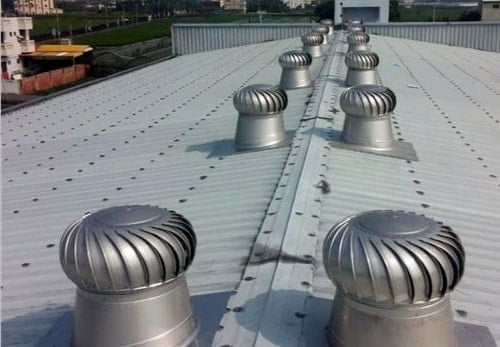Maintaining optimal air quality and ventilation is of utmost importance in the ever-changing industrial environment to ensure worker health and safety, operational efficiency, and adherence to regulatory standards. Industrial ventilation solutions that are driven by exhaust fans are crucial in accomplishing these goals through the efficient elimination of airborne particles, heat, and contaminants from confined areas. This article will examine the importance of exhaust fans, the function of industrial ventilation solutions, and the consequences that they have on industrial processes.
1. An Examination Of Exhaust Fans
Exhaust fans are essential constituents of industrial ventilation systems, performing the critical function of eliminating contaminated air, contaminants, and surplus heat from enclosed areas. By generating negative pressure within the structure, these fans simultaneously draw in fresh outdoor air and expel contaminated indoor air. Industrial ventilation solutions effectively manage indoor air quality, modulate temperature, and provide a secure and comfortable working environment for employees through the utilization of exhaust fan power.
2. Contaminant Elimination
Industrial exhaust fans are designed with the principal purpose of eliminating airborne contaminants that are produced as a result of industrial operations. All of these contaminants—dust, smoke, fumes, chemical emissions, and particulate matter—pose inhalation hazards to employees’ health. By efficiently capturing and expelling these pollutants from the structure, exhaust fans effectively mitigate their buildup and thereby reduce the potential health hazards that workers may encounter, including respiratory problems, skin irritation, and others.
3. Dissipation Of Heat
Ensuring optimal temperature conditions is critical for the comfort and safety of workers in industrial settings that contain heat-generating equipment or procedures. By expelling hot air and facilitating the exchange of indoor and outdoor air, exhaust fans are essential for heat dissipation, regulating interior temperatures, and preventing overheating. This holds specific significance in establishments such as foundries, smelters, and manufacturing factories, where elevated temperatures may jeopardize the well-being of employees and the structural integrity of equipment.
4. Humidity Regulation
In industrial environments, excessive humidity can contribute to a variety of problems, including mold growth, corrosion, and worker distress. By removing moist air and encouraging air exchange, industrial exhaust fan assist in humidity regulation, preventing moisture development and preserving a dry, comfortable indoor environment. Exhaust fans aid in the preservation of equipment, materials, and infrastructure by regulating humidity, thereby extending their operational lifespan and mitigating maintenance expenditures.
5. Adherence To Regulations
Industrial facilities must follow rules and specifications that control pollution levels, ventilation rates, and interior air quality in order to protect workers’ health and safety. Compliance with these regulations is significantly aided by the effective removal of contaminants and the maintenance of adequate ventilation throughout the facility by exhaust blowers. Organizations can exhibit their dedication to environmental stewardship and workplace safety, as well as mitigate regulatory risks and avoid fines and penalties, by making investments in industrial ventilation solutions that are propelled by exhaust fans.
6. Energy Efficiency And Savings
Contemporary industrial exhaust fans are built with energy efficiency in mind, enabling organizations to decrease both energy usage and operational expenditures. Variable speed controls, energy-efficient motors, and automated ventilation systems are included in these fans to facilitate optimal circulation management and energy conservation. Industrial facilities have the potential to reduce their utility expenses, mitigate their environmental impact, and improve the overall sustainability of their activities through the implementation of energy-efficient exhaust fans.
Conclusion
Exhaust fan-powered industrial ventilation solutions are of the utmost importance for preserving healthy, safe, and productive work environments in industrial settings. Through the successful elimination of impurities, regulation of temperature and humidity, and adherence to regulatory requirements, these solutions make a positive contribution to the welfare of personnel, operational effectiveness, and overall achievement of industrial establishments. The increasing demand for sustainable practices and pure air will inevitably elevate the significance of exhaust fan-powered industrial ventilation solutions, rendering them essential elements of contemporary industrial operations.
